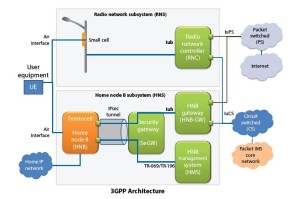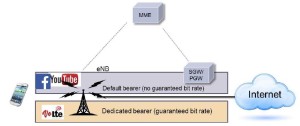(Summary: TRAI has released technical paper on ‘Call drop’ issue and proposed installation of new towers. We believe, as operators are rolling out 4G-LTE, regulator has to enable opcos in rolling out next gen technologies to tackle complex network optimization problems, including Call drops. Building long-terms visibility and solution approach is necessary, rather than short-term penalty approach.)
India’s telecom regulator, TRAI, has released technical paper to improve worsening call drop situation across metros. The paper released and published here, talks about various aspects of call drops, measurement methodology and ends with solution proposal. Coincidently, COAI, the body representing GSM operators in India, has submitted another statement to regulator mentioning that call drop penalty, proposed by regulator, may cost telcos $8B in next FY and would hamper telcos contribution in Digital India project.
TRAI has carried out various ‘Field Drive tests’, independently, from June to Sep this year and measured ‘Call Drops’ across city of Mumbai and Delhi. In technical terms, TRAI has measured ‘TCH Channel’ drops (read traffic channel drop), which has predefined threshold of 2{af589cdba9d77786c8c861317dbad60bba1e2ebbf56e2ffab874a1b59fde9ce3} (read- 2 out of 100 calls are allowed to drop), set by regulator. If ‘TCH Drop’ exceeds threshold of 2{af589cdba9d77786c8c861317dbad60bba1e2ebbf56e2ffab874a1b59fde9ce3}, then network has high call drops reported, which needs further investigation to resolve issue.
According to regulator, sudden loss of ongoing call is one of the major reasons of call drops, followed by poor signal strength on uplink (Mobile to BTS) and downlink (BTS to Mobile). Poor signal on both up and downlink is another important factor for call drops. Paper also mentions un-defined ‘another’ reason as important factor for call drops.
Of all causes behind call drops, radio link failure (RL Failure) and handover failure are the root causes of ‘Call drops’. In other words, moving from one cell site to another (in mobility mode), with improper handover between cells sites, is considered as major reason behind all observed call drops in Mumbai and Delhi. The paper also talks about SDCCH channel (Signalling channel which helps in setting up GSM/2G call) and traffic channel congestion, leading to less call attempts over network, which points out capacity crunch at tower sites, also accounting to increase in call drops over network.
As per TRAI, in order to resolve issue, installing more towers to improve coverage (especially improving uplink and downlink signal) should be the way forward. TRAI also suggests installation of repeaters/boosters in areas difficult to reach, to improve signal strength. Regulator has also directed the attention towards sealed towers in certain areas of metros, and asked local bodies to help in de-sealing of towers. Apart from above mentioned solutions, regulator has proposed regular network optimization as key to improving call drops.
But the real question remains- why did regulator jumped on penalizing telcos, even before it proposed the solution to improve call drops? Another question is, would regulator be implementing post-drive tests to record call drops, post de-sealing of towers, or installation of new towers? Moreover, what-if, call-drops observed below set threshold, would TRAI go ahead and implement the financial penalty on telcos from next year?
We at Telecomblogs believe that, although regulator did good job in identifying the issue and brining attention to it, it has hurriedly moved on penalizing telcos, even before the investigation or solution implementation is complete. The fair practice would have been to implement some of the solutions proposed and observe improvement in ‘TCH Drop’ KPI, over certain period.
However, apart from those de-sealing of towers or installing new towers, we do think that regulator needs to move forward and help telcos to implement some of the widely deploying ‘Next Gen’ technologies for better quality of service experience. Here is what we propose could help in reduction of call drops and improve ‘Quality of Experience’ for subscribers.
- Deployment of Outdoor/Indoor Small Cells: Small Cells, as name suggests, are small towers with reduced transmission power and small coverage radius, which can be deployed quickly on places like utility poles and help in improvement of coverage and capacity quickly, especially in areas where installing new tower is impossible or even difficult. Globally, Small Cells are deployed in huge numbers, especially to offload rising data demand (from Macro towers) and filling coverage gaps in the network (reduction in call drops). Small Cells can be real panacea for operators, especially in metros, where dense urban environment prohibits installing new towers. Regulator can come up with whitepaper on building Small Cells ecosystem, by providing power, security and space to help telcos to install them quickly. Moreover, installing Small Cells base stations, improves uplink quality and downlink signal coverage, as compared to repeaters and boosters.

- Deployment of Voice over LTE or HD Voice: As telcos are rolling out LTE network, regulator can pave way for rollout of HD Voice or Voice over LTE network. VoLTE is next generation voice calling technology, which enables in delivering crystal clear voice on IP based network. Currently, all voice calls are routed through traditional circuit switch (CS) network, deployed decades back by teclos. Maintaining the CS network, especially in age of data, where voice ARPU has fallen steeply, burdens telcos significantly. Deploying VoLTE, could pave way for improving call drops and improving customer experience drastically.

- Automation in Network Optimization: Currently, network optimization is manual process for operators. Network optimization activity carried out to maintain network KPIs (including TCH Drop) from falling below set threshold value. Operators have planning and optimization teams, who carry regular ‘Field Drive Tests’ and measure Network health KPIs. Based on results in field tests, operator’s optimization teams recommend plan of action to improve KPIs, which is then passed on to ‘Operation teams’ for implementing changes. Once recommendations are implemented, post change field drive tests are carried out to validate the changes to make it permanent. Moving forward, regulator can bring whitepaper on ‘Self Organizing Networks-SON’, where operators can deploy SON solutions to automate certain areas of network field tests and change implementation. SON is still at nascent stage and growing LTE deployment would need telcos to deploy more SON based automation solution, which would also help in cost-reduction and improving KPIs. Building SON ecosystem has become necessity of time for regulator.
- Real time-Location Intelligence into Network Operations and Optimization: As mentioned in above point, moving from manual way of network optimization to SON/Automation based solution can help telcos to improve call drop. Another way to reduce call drops is to build location intelligence tied up with network KPI metrics, enabling opcos to get location based visibility into Network KPIs. For example, Real time- location intelligence solution can tell operator, that certain area of network is reporting high call drops or congestion, compared to other areas. Once operator gets visibility into the problem, in real time, it can investigate further, by enabling call-trace on subscriber’s smartphone (in that area where poor KPIs are reported) and record certain network related information for immediate diagnostic based action (such call traces are executed on subscriber’s smartphone with prior subscriber permission), which can be coupled with SON based solution for automated change implementation. These types of real time, location intelligence based solutions, not only save time and money on carrying out field drives test, but also helps in improving quality of service, which in turn improves ‘Quality of Experience’ for customers.
- Building awareness on more network validation and testing: Regulator knows the set of tests opcos carry before turning on or deploying new networks. Burdening opcos with financial penalty greatly reduces opcos interest in carrying out rigorous testing and network validation investments, which is the key to better network experience for subscribers. Imposing financial penalty, on debt ridden telcos, could pull opcos away from implementing real solutions, rather than short-term fixes to network. Regulator, as rightly said, should be the enabler for building thriving industry, rather than becoming impediment for better network.



